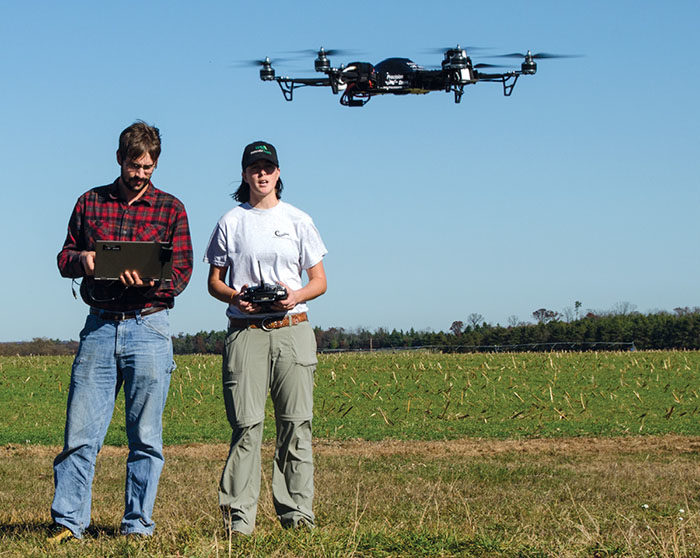No-Till Farmer
Get full access NOW to the most comprehensive, powerful and easy-to-use online resource for no-tillage practices. Just one good idea will pay for your subscription hundreds of times over.

TAKING FLIGHT. Grand Marsh, Wis., strip-tillers Eric and Megan Wallendal’s investment in an unmanned aerial vehicle (UAV) helped them make adaptive decisions for in-season nutrient application and for their variable-rate irrigation program.
The motor begins to hum and the propellers begin their increasingly rapid revolutions. A gentle upward tilt of the joystick by the owner and the rotocopter is airborne — slowly elevating as it drifts over a cornfield to capture hundreds of images that will be processed and analyzed.
This was a recurring practice last year for Eric and Megan Wallendal on their family’s 3,200-acre farm in Grand Marsh, Wis. The husband and wife are among a growing number of farmers experimenting with and applying unmanned aerial vehicle (UAV) technology on their operations.
But as agricultural interest in UAVs, or drones, has increased dramatically in the last few years, so too have the number of questions about the practical payback and tangible benefits these tools can provide to farmers.
“I think there’s a lot of misconception out there that farmers can fly a drone and it will immediately provide a solution to a problem,” Eric says. “It’s still trial and error, but we’ve found that the technology gives us a better tool to analyze what’s going on in the field during the growing season, and also project ending results to manipulate future cropping practices.”
Analysis of high-resolution imagery collected from their UAV system, in conjunction with variable-rate fertilization, irrigation and soil testing, lead the Wallendals to estimate a $20…